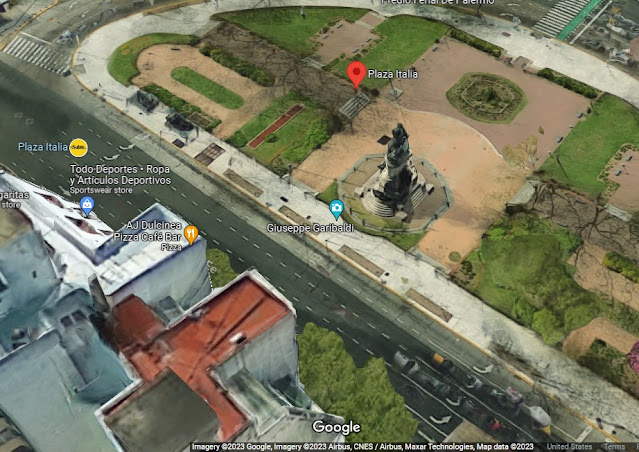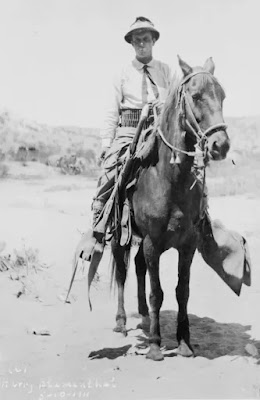Italian Americans: A Legacy of Valor and Patriotism
Italian Americans have played a significant and often overlooked role in the history of the United States, notably during pivotal conflicts such as the Revolutionary War and the Civil War. Their contributions underscore a deep tradition of patriotism and service to their adopted homeland, enriching America's narrative with their courage and commitment.
Italian Americans in the Revolutionary War
While the presence of Italian Americans during the Revolutionary War (1775-1783) was relatively limited compared to later conflicts, there were notable individuals of Italian descent who made significant contributions. Filippo Mazzei, an Italian physician, and close friend of Thomas Jefferson, is a particularly distinguished figure. Mazzei’s advocacy for liberty and human rights influenced the ideological foundations of the new nation, with Jefferson paraphrasing his writings in the Declaration of Independence.
Mazzei’s commitment to the American cause was unwavering; he actively promoted support for the Revolution in Europe, helping to garner crucial aid from France and other countries. While few Italians lived in the American colonies at the time, Mazzei exemplified the spirit of unity and support that characterized the contributions of Italian Americans in America's fight for independence.
Italian Americans in the Civil War
The Civil War (1861-1865) saw a more noticeable involvement from Italian Americans, who fought with valor on both sides of the conflict. Their participation reflected the deep divisions within American society but also highlighted their integration and commitment to their new country.
One of the notable Italian American figures during this period was Colonel Luigi Palma di Cesnola, an immigrant from Italy who commanded the 4th New York Cavalry. Di Cesnola received the Medal of Honor for his heroism, particularly noted during the Battle of Aldie in 1863. His leadership and bravery were emblematic of the sacrifices made by Italian Americans during the war.
In addition to soldiers like di Cesnola, Italian immigrants contributed in other ways, such as through logistical support and supplying the forces. Their involvement underscored not only their desire for a united and free America but also their readiness to defend the principles upon which the nation was founded, even at great personal cost.
Italian American Patriotism
The patriotism of Italian Americans extends beyond their contributions to specific wars. It is embedded in a tradition of service and civic engagement. Throughout American history, Italian Americans have actively participated in political, social, and cultural development.
During World War II, the loyalty and patriotism of Italian Americans were once again evident despite facing significant prejudice and suspicion, particularly once Italy allied with Axis powers. Many Italian Americans served valiantly in the U.S. Armed Forces, while others contributed on the home front, demonstrating unwavering support for the United States.
Italian Americans have continued to influence the fabric of American society, with their rich cultural heritage contributing to the diversity that defines the United States. Today, their patriotism is celebrated through various cultural organizations and events, which help preserve their unique history and contributions.
Conclusion
The legacy of Italian Americans is a testament to their enduring patriotism and their significant contributions to the history and development of the United States. From the Revolutionary War to the Civil War, and through to modern times, Italian Americans have consistently demonstrated a profound commitment to their adopted homeland, enriching the nation with their bravery, service, and cultural heritage. Their story is a vital part of the broader American narrative, illustrating the diverse and inclusive spirit that defines the United States.
Italian Americans and the Celebration of Independence Day: A Fusion of Patriotism and Heritage
Independence Day, or the Fourth of July, stands as a symbol of freedom and unity in the United States. For Italian Americans, this day holds deep significance, serving as an opportunity to honor their adopted homeland while celebrating their unique cultural contributions. The intertwining of American and Italian traditions on this day highlights the profound patriotic spirit and rich heritage of Italian American communities.
Embracing American Patriotism
Italian Americans have long demonstrated a strong commitment to American values and ideals. Their enthusiastic participation in Fourth of July celebrations is a testament to their patriotism. Across the country, Italian American communities engage in a variety of activities that blend both American and Italian customs, creating festive environments that celebrate freedom and heritage alike.
Community Celebrations and Parades
Many cities with significant Italian American populations, such as New York, Boston, and Chicago, host grand Independence Day celebrations that prominently feature Italian American participation. Parades are a highlight of these festivities, where Italian American organizations, such as the Order Sons of Italy in America (OSIA), proudly march with the Stars and Stripes and the Italian Tricolore. These parades often include displays of Italian culture through traditional music, dance, and folk costumes, reflecting the dual heritage cherished by Italian American families.
Festivities and Food
Food plays a central role in Fourth of July celebrations among Italian Americans. Traditional American barbecue staples like hamburgers and hot dogs are often complemented by Italian favorites such as pasta dishes, cannolis, and gelato. It is not uncommon to find Italian American households hosting large family gatherings featuring both Italian and American culinary delights.
In cities like San Francisco and New Orleans, where Italian American communities are vibrant, public events during the Fourth of July often include food festivals showcasing an array of Italian dishes. These events not only celebrate American independence but also highlight the cultural contributions of Italian Americans to the nation's diverse culinary landscape.
Honoring Military Service
Independence Day is also a time for Italian Americans to honor the service and sacrifices of their community members in the U.S. Armed Forces. Italian Americans have a proud history of military service, from early conflicts like the Revolutionary War and Civil War, to World War I, World War II, and more recent engagements. Memorials and ceremonies on the Fourth of July often include tributes to Italian American veterans, underscoring their dedication and patriotism.
Celebrating Freedom and Heritage
For many Italian Americans, the Fourth of July is a day to reflect on the journey of their ancestors who left Italy in search of a better life in the United States. It is a day that symbolizes the freedoms and opportunities they found in America, allowing them to build prosperous lives while maintaining their cultural identities. The celebrations often include storytelling sessions where elders share tales of their immigrant forebears, fostering a sense of pride and continuity within the community.
Cultural Events and Performances
Incorporating Italian cultural elements, such as opera performances, folk dances, and art exhibitions, into Fourth of July festivities helps Italian Americans express their dual identity. For instance, cities like New York host special events at Italian cultural centers, where community members can enjoy concerts featuring both the American national anthem and "Il Canto degli Italiani," the Italian national anthem. Such events promote cultural appreciation and unity, reinforcing the bonds between all Americans.
Conclusion
Independence Day is a day of profound significance for Italian Americans, embodying their love and loyalty to the United States while celebrating their rich cultural heritage. Their enthusiastic participation in July 4th festivities, with a blend of American and Italian traditions, exemplifies the integrative spirit that defines the American experience. As Italian Americans gather with family and friends, march in parades, enjoy festive meals, and honor their veterans, they continue to uphold the ideals of freedom and unity that the Fourth of July represents. This celebration not only highlights their contributions to American society but also reinforces the enduring values of diversity and inclusion at the heart of the nation.
To read more about Italian Americans and the Revolutionary War and patriotism, click here: Italian Americans and the Revolutionary War - Google Search , Italian Americans and patriotism - Google Search











.jpg)








